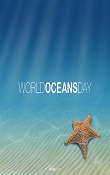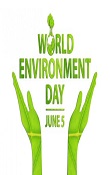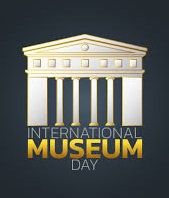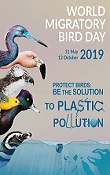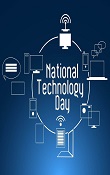Rediscovering Great Teachers – Maria Montessori
Rediscovering Great Teachers – Maria Montessori
 Maria Tecla Artemisia Montessori was an Italian educator who was born on 31 August 1870 in Chiaravalle, Italy. Her father, Alessandro Montessori, was a civil servant. Her mother, Renilde Stoppani, was a well-educated lady who was the great-niece of the famous Italian geologist and palaeontologist Antonio Stoppani. Maria Montessori was close to both her parents, her mother who readily encouraged her to pursue her dreams and her father, who did not agree on her views on education.
Maria Tecla Artemisia Montessori was an Italian educator who was born on 31 August 1870 in Chiaravalle, Italy. Her father, Alessandro Montessori, was a civil servant. Her mother, Renilde Stoppani, was a well-educated lady who was the great-niece of the famous Italian geologist and palaeontologist Antonio Stoppani. Maria Montessori was close to both her parents, her mother who readily encouraged her to pursue her dreams and her father, who did not agree on her views on education.Maria Montessori, along with her family, shifted to Rome in 1875, because of the nature of her father's work. She entered a public school in 1876 and was awarded numerous certificates for her good behaviour by the time she completed grade 1.
At the age of 13, she entered a secondary technical school where she studied arithmetic, history and science, and graduated in 1886 with good results. The following year, she continued her studies at the Regio Instituto Tecnico Leonardo da Vinci where she excelled in science and mathematics.
She intended to pursue engineering upon her graduation. However, it was a very unusual aspiration for a woman of her time. Instead, she decided to study medicine and enrolled at the University of Rome. She was strongly discouraged for her decision and was met with hostility at the university because of her gender, but she continued to pursue her dreams of becoming a doctor. Montessori won an academic prize in 1895 which helped her secure a position as a medical assistant after which she graduated from the University of Rome in 1896 as a Doctor of Medicine, becoming one of the first female doctors in Italy.
She set up a private practice and began working with disabled children. During this time, she traveled, studied and published several articles that advocated women's rights and the education of mentally disabled children. She was also a part of the University of Rome's psychiatric clinic and worked with slums to study children with mental disabilities and learning problems as a part of her research work.
By 1897, Montessori began to talk about societal responsibility for juvenile delinquency at the National Congress of Medicine in Turin, after which she published several articles on mentally disabled children. By 1899, she was appointed the councillor of the National League for the Education of Retarded Children and became a lecturer of Hygiene and Anthropology at two training colleges in Italy.
In 1901, she started working on her own studies of education, philosophy and anthropology. During this time, parents had to leave their children at home which meant they needed a guide and role model. This presented Maria the opportunity to work with them. She opened the ‘Casa dei Bambini’ or the Children’s House in Rome, in 1907 where she taught students using some of the learning materials she had developed.
 She discovered that children had the power to educate themselves with the objects in the environment. In 1909, she gave her first training course to over 100 students in Città di Castello, Italy after which she published her first book called ‘Il Metodo della Pedagogia Scientifica Applicato All'Educazione Infantile Nelle Case Dei Bambini’ or ‘The Method of Scientific Pedagogy Applied to the Education of Children in the Children's Houses’ when translated to English. The book was released in the United States where her method of teaching was referred to as ‘The Montessori Method’.
She discovered that children had the power to educate themselves with the objects in the environment. In 1909, she gave her first training course to over 100 students in Città di Castello, Italy after which she published her first book called ‘Il Metodo della Pedagogia Scientifica Applicato All'Educazione Infantile Nelle Case Dei Bambini’ or ‘The Method of Scientific Pedagogy Applied to the Education of Children in the Children's Houses’ when translated to English. The book was released in the United States where her method of teaching was referred to as ‘The Montessori Method’. She travelled for the next 20 years and expanded the method she had developed. She also teamed up with her son Mario, who often was her subject of study. She set up Montessori societies, training programmes and schools, often lecturing about the method in America, UK and Europe.
In 1939, Maria and her son Mario moved to India for a three-month training course and a lecture tour. The trip lasted seven years. In India, Maria trained thousans of teachers. After returning to Europe, she addressed the UNESCO in 1947 on Education and Peace which ultimately led to her nomination for the Nobel Peace Prize in 1949, 1950 and 1951. Though she died in 1952, her work continues to live through the Association Montessori Internationale(AMI), an organisation founded by her in Amsterdam, in 1929.
Legacy
Though Montessori’s work began at the beginning of the 20th century, her philosophy and approach continue to remain fresh and in tune with modern minds. Her work resonates with parents who seek to stimulate the minds of their children by using creative activity and exploration. The children who are educated under the Montessori method know who they are as people, are confident and at ease with themselves. This helps them to interact and connect easily with their peers and other adults.












